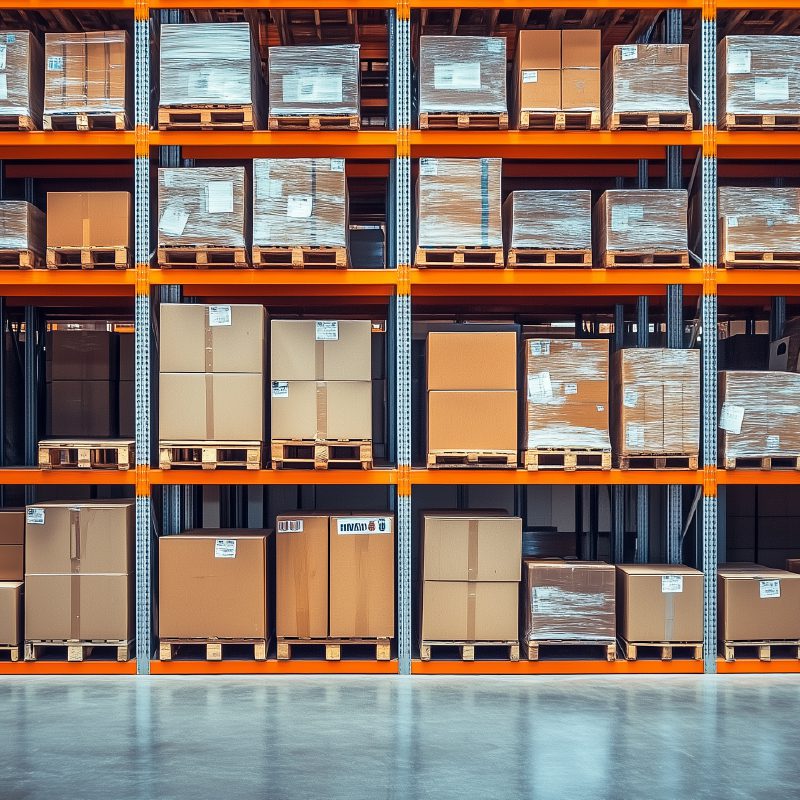Research by Modern Materials Handling reveals that 88% of companies are satisfied with the integration costs of their robotics implementations. That’s encouraging—now how do you stay out of the other 12%? And what hidden costs should you be aware of beyond initial implementation of MHE in the warehouse?
In Part 1 of this series, we showed why you should evolve your tech strategy beyond basic MHE automation. Today we’ll explore the tech alignment imperatives when bringing MHE into the warehouse — faster, easier, and cheaper.
The acceleration of MHE in the warehouse
Industry research indicates that by 2028, 80% of warehouses and distribution centers will deploy some form of warehouse automation. By 2030, one-third of all medium to large warehouses will have at least one operational robotics platform, according to our MHE ebook: “Beyond The Basics: A Comprehensive Guide to Warehouse Management Maturity and Flexible Solutions.”
Decisions about MHE in the warehouse have far-reaching financial implications that many organizations fail to consider. You can mitigate these often overlooked costs and accelerate value by taking a strategic approach across several core areas.
Operational alignment, the MHE imperative
Selecting MHE technology that doesn’t align with your operational maturity is like buying a Ferrari for your 16-year-old. They may get where they are going, but who knows how much it will cost, or what risks they’ll incur along the way.
Detailed in our ebook, there are five levels of technology maturity when considering your operational readiness for MHE in the warehouse. Most organizations operate in the early- to mid- levels, progressing gradually as their requirements become more complex.
You can – and should – join the MHE revolution. However, bringing MHE into the warehouse without operational alignment creates several hidden costs:
- Unused functionality you’re still paying for
- Training burdens for features your team isn’t ready to use
- Maintenance requirements for underutilized systems
- Opportunity costs from misallocated technology investments
The Takeaway: Get help investing in technology suited to your current level of complexity and maturity, while ensuring those solutions can scale to meet future needs.
Our assessment tool makes it easy to understand how you compare to others in your industry across 10 key dimensions. [No form required]

Integrations, the budget-buster nobody talks about
MHE integration is one of the biggest hurdles to anticipate if you are not ready. Weaving together the many systems that manage different parts of the operation is a challenge that intensifies as complexity grows. Deposco customers use pre-defined socket integrations to simplify MHE deployment and lower costs.
This integration approach, called Bright Socket, simplifies the setup and allows for more ownership of the connection. This approach helps you control integration costs by ensuring that:
- Custom coding is not required to connect MHE systems
- Data structures between systems align
- Update cycles for different systems are in sync
- Good collaboration is established between vendors when it comes to integration points
The Takeaway: Addressing MHE integration requirements upfront is critical to controlling these costs. You can streamline MHE integration through several simple strategies, including: predefined integrations, integration-as-a-service, and key endpoints that are defined early.
Over 150 pre-built integrations to your existing systems and solutions you may need in the future. That means faster, cheaper deployments for what you need when you need it.

System rigidity’s hidden tax
Given that ecommerce now accounts for over 20% of retail sales globally, you better have a system that can transform as quickly as fulfillment expectations do. Rigid warehouse systems that can’t adapt to changing requirements like MHE-level throughputs impose ongoing costs:
- Lost sales when you can’t meet service level agreements
- Operational slowdowns from workarounds and manual processes
- The expense of maintaining parallel systems for multiple channels
- Premature replacement costs when systems can’t evolve
The Takeaway: Flexible supply chain execution solutions allow you to respond to market shifts by scaling your operations and adopting new technologies without constant overhauls. The trend has moved from best-of-breed point solutions to platform plays that allow you to expand as needed.
Get out of developer mode panic and into growth mode! Request a demo to see how quickly you can scale your supply chain operations with Deposco.

Ensuring workforce readiness
Adoption can also be a challenge when introducing new MHE in the warehouse if workers do not understand its role in reducing the challenges of manual tasks. Properly preparing your workforce for a positive user experience with MHE creates huge benefits:
- Increased productivity during learning curves
- Less turnover from frustration with difficult systems
- Fewer safety incidents from improper system use
- Decreased risk from staff creating workarounds and shortcuts
The Takeaway: Involving users throughout the transition—encouraging feedback and sharing progress—accelerates MHE adoption while empowering your company to continuously refine processes. An experienced partner like Deposco employs change management and other proven techniques that empower your workforce to understand, adopt, and champion your new investment.
Future-proofing your technology investment
The biggest thing to watch out for with MHE in the warehouse is premature obsolescence. Flexible warehouse management gives you the freedom to incorporate innovation, refine processes, and make strategic pivots. Starting with a small area, and tracking the benefits, can give you a better understanding of total cost of ownership and overall fit for your organization. Define supply chain KPIs that are important to your stakeholders and see how that scales with cost, maintenance, and throughput increases.
The Takeaway: The robotics-as-a-service (RaaS) market is evolving rapidly and will grow from $1.33 billion in 2023 to $4.12 billion by 2030. Choosing a WMS that embraces change, rather than resists it, will become critical to your long-term ROI.
Conclusion
Making informed warehouse technology decisions requires looking beyond initial price tags to consider the full lifecycle costs of MHE in your warehouse. Deposco can help you properly select, implement, and evolve technologies that deliver sustainable value without hidden financial surprises. Schedule your personalized 1:1 demo to learn more!

